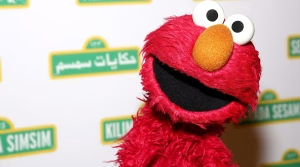Women celebrate their inner curl in honor of Queen Esther
Published February 27, 2009
If beauty is only skin deep, why do women fuss so much over hair? If our hair is straight, we curl it with a perm. If our hair is curly, we straighten it with a flatiron. We’re never satisfied, unlike the biblical matriarchs, who defined beauty from within.
The symbolic beauty of hair has deep roots in Jewish history. In fact, lovely locks inspired poetry in the Biblical Song of Songs with “Your hair is like a flock of goats from Gilead.” The Talmud not only regarded woman’s hair as beautiful but as erotic, and for that reason it had to be covered, but that’s another story altogether.
Beauty has deep roots in Judaism, going back to Sarah, Rebecca, Rachel, and Leah. These archetypes of Jewish womanhood were singled out for their attractiveness. Sarah is “a woman of beautiful appearance” (Genesis 12:11); Rebecca is “very fair to look upon” (Genesis 24:16); Rachel is “beautiful of form and beautiful of appearance” and Leah’s “eyes were tender.” (Genesis 29:17).
Although the focus here is on outward appearance, the Bible implies that physical beauty is a metaphor for inner beauty because these women are revered not as much for their looks as they are for their goodness.
Perhaps no other woman epitomizes both inner and outward beauty more than Queen Esther, according to the Megillah (the story of Purim). Her exquisite beauty, grace, and poise set her apart from all the other maidens in Persia. In addition to physical beauty, Queen Esther possessed inner beauty through courage, confidence, obedience, honesty, self-sacrifice, wisdom, and a devotion to God. She saved the Jewish people from near-certain slaughter, and for this she was a true heroine.
On Purim, we celebrate the victory of the Jews and honor the beautiful Queen Esther by letting our hair down, literally, whether it’s thick, fine, curly, straight, or somewhere in between. In addition to a jubilant party with wild costumes and noisy graggers, Purim gives Jewish women an opportunity to discover their inner and outward beauty in Queen Esther style.
For the more than 65 percent of women who have naturally curly hair, it’s never been a better time to bring out their beautiful, naturally cultivated ringlets. In fact, many women consider the natural traits of our minority culture as exotic.
“Live and let live is my philosophy in life and with hair, too,” says Casey Cook, a 23-year-old hairdresser at Frontenac Salon and Spa, which specializes in cutting-edge coloring and styling techniques for those with curly hair.
“I teach my clients, many of whom are Jewish moms and their teenage daughters, to embrace and encourage their natural texture,” Cook says.
Curly hair requires lots of love and attention, which, frankly, sounds like most Jewish women. Cook cuts this type of hair when it’s dry, not wet, one curl at a time.
“A lot of people say curly hair is a trend right now, but to me it’s a lifestyle,” says Cook, who was trained in New York City under Lorraine Massey, the author of Curly Girl, which is considered the bible for women with hair to be envied. “Embracing your hair makes a big difference about how you feel inside. In the hair world, curly haired people suffer the most, but why fight nature? It’s much easier to let curly hair flow,” says Cook, who never uses a comb, brush or blow dryer. “We try to not disturb the curl as much as possible.”
Curly hair is all about attitude and requires lots of hydration as well. That’s why shampoos with sulfate and detergents are a no-no. Even Queen Esther would have indulged in the latest line of products that contain ingredients straight from the rain forest in Brazil, such as cupuacu, murumuru, jojoba, and cocoa seed butter.
Holly Balk, owner of Holly B. Hair in Susan Roberts Salon, in Creve Coeur, has been cutting hair for more than 20 years. About half of her clients are Jewish, ranging in ages from 50 to 90, and she also works on plenty of bat mitzvah girls who want the Miley Cyrus look of long side bangs.
“Unfortunately, women with thick curly hair are not going to look perfect when they wake up in the morning, so they have to wet their hair and put product in to control the curls and keep the frizz out,” says Balk, a 49-year-old Jewish mother of two teenage boys. “Curly hair has to be wash-and-wear, especially for working women who need an easy style to manage.
“It’s pretty stereotypical that Jewish women have thick curly hair, but my clients have all types of hair, including wavy, straight and fine. For the most part, we have a pretty good head of hair.”
Amy Mandlman, a 44-year-old speech therapist and professional masseuse with corkscrew curls, is one of them. She wears her stylish hair in a short stack in the back with longer lengths on the sides. She follows a hair routine every morning.
“I used to hate my hair before all the new products were available to control and manage it,” Mandlman says. “Now I love my hair. I just wet it in the morning, and I use my fingertips to rub product into my scalp and roots, lifting my hair at the base of my head. Then I scrunch my curls and leave it alone.”
Bottom line, no matter what kind of hair we have, the lesson this Purim is to rejoice in our uniqueness and treat ourselves like queens.
“Mishegas of Motherhood” is the creation of Ellie S. Grossman, a St. Louis freelance writer and stay-at-home-mom who never stays home. Currently, she is getting to know her inner curl again. Visit her website at www.mishegasofmotherhood.com.















